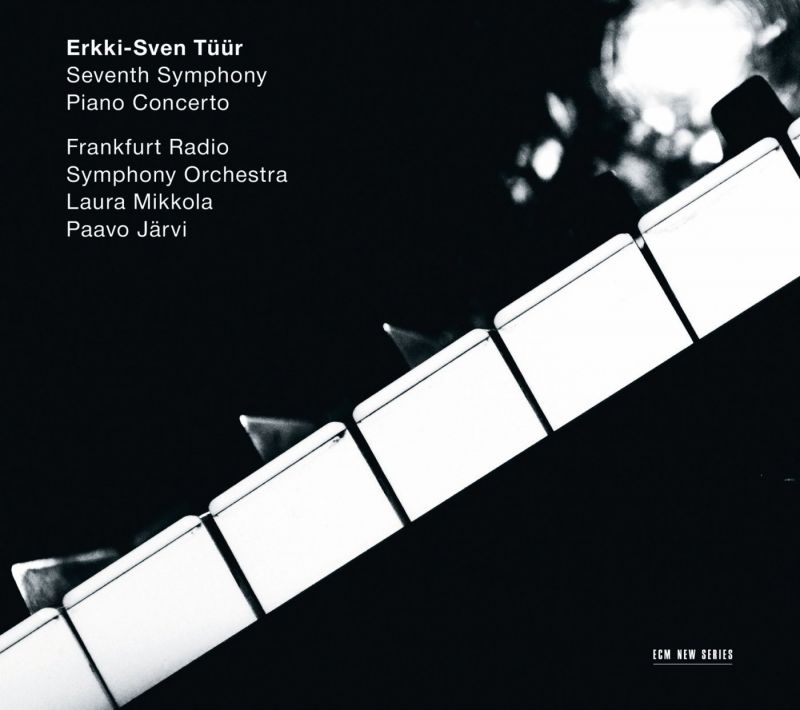TÜÜR Symphony No 7. Piano Concerto
View record and artist detailsRecord and Artist Details
Composer or Director: Erkki-Sven Tüür
Genre:
Orchestral
Label: ECM New Series
Magazine Review Date: 05/2014
Media Format: CD or Download
Media Runtime: 62
Mastering:
DDD
Catalogue Number: 481 0675

Tracks:
| Composition | Artist Credit |
|---|---|
| Symphony No 7 |
Erkki-Sven Tüür, Composer
Erkki-Sven Tüür, Composer Frankfurt Radio Symphony Orchestra Hamburg NDR Choir Paavo Järvi, Conductor |
| Concerto for Piano and Orchestra |
Erkki-Sven Tüür, Composer
Erkki-Sven Tüür, Composer Frankfurt Radio Symphony Orchestra Laura Mikkola, Piano Paavo Järvi, Conductor |
Author: David Fanning
This is another granite-hewn score, which seizes you by the magnificence of its sound-masses, then holds you by the logic of their mutations. At the very beginning I thought I had somehow strayed into Per Nørgård’s Sixth Symphony, whose magical, multi-layered, silvery descents it echoes. But the comparison with the Dane is a compliment to the music’s capacity to inspire awe and to retain control over an unfolding argument.
There is a catch, however. Tüür dedicates the work to the Dalai Lama and includes choral declamations of aphorisms from the young Buddha, Gandhi, Jimi Hendrix, St Augustine, Mother Teresa and Deepak Chopra. It’s hard to see anyone dissenting from the sentiments of the words themselves. But I have to wonder what the work gains from having such soundbite spirituality so blatantly spelt out (in English but in such a way that barely a word is audible). Furthermore, entitling the work Pietas (‘Piety’) itself offers a hostage to fortune, since what was an unquestioned virtue to the likes of Virgil and Cicero has acquired negative connotations in the domain of aesthetic values (as in ‘pious hopes’). Yet what an extraordinary feat of musical imagination is the work’s 20 minute concluding movement.
Few composers are able to sign themselves in with a single note. But Tüür manages it with the opening of his Piano Concerto (2008), a low C rung out by the piano, coloured by metallophones and prolonged by low strings and brass. To invoke the overtone series straight afterwards may seem like a rather obvious ploy; but it justifies itself in retrospect, thanks to the sheer harmonic and textural resourcefulness that follows. The three movements run continuously. You might not actually spot the divisions, except that the second movement is where the piano-writing suddenly, and rather grandly, evokes Messiaen, and that the third begins with a kind of free-jazz accompanied cadenza. The latter, I have to say, sticks out like the proverbial sore thumb. Otherwise the combination of logic and boldness is engrossing from first to last.
Discover the world's largest classical music catalogue with Presto Music.

Gramophone Digital Club
- Digital Edition
- Digital Archive
- Reviews Database
- Full website access
From £8.75 / month
Subscribe
Gramophone Full Club
- Print Edition
- Digital Edition
- Digital Archive
- Reviews Database
- Full website access
From £11.00 / month
Subscribe
If you are a library, university or other organisation that would be interested in an institutional subscription to Gramophone please click here for further information.




